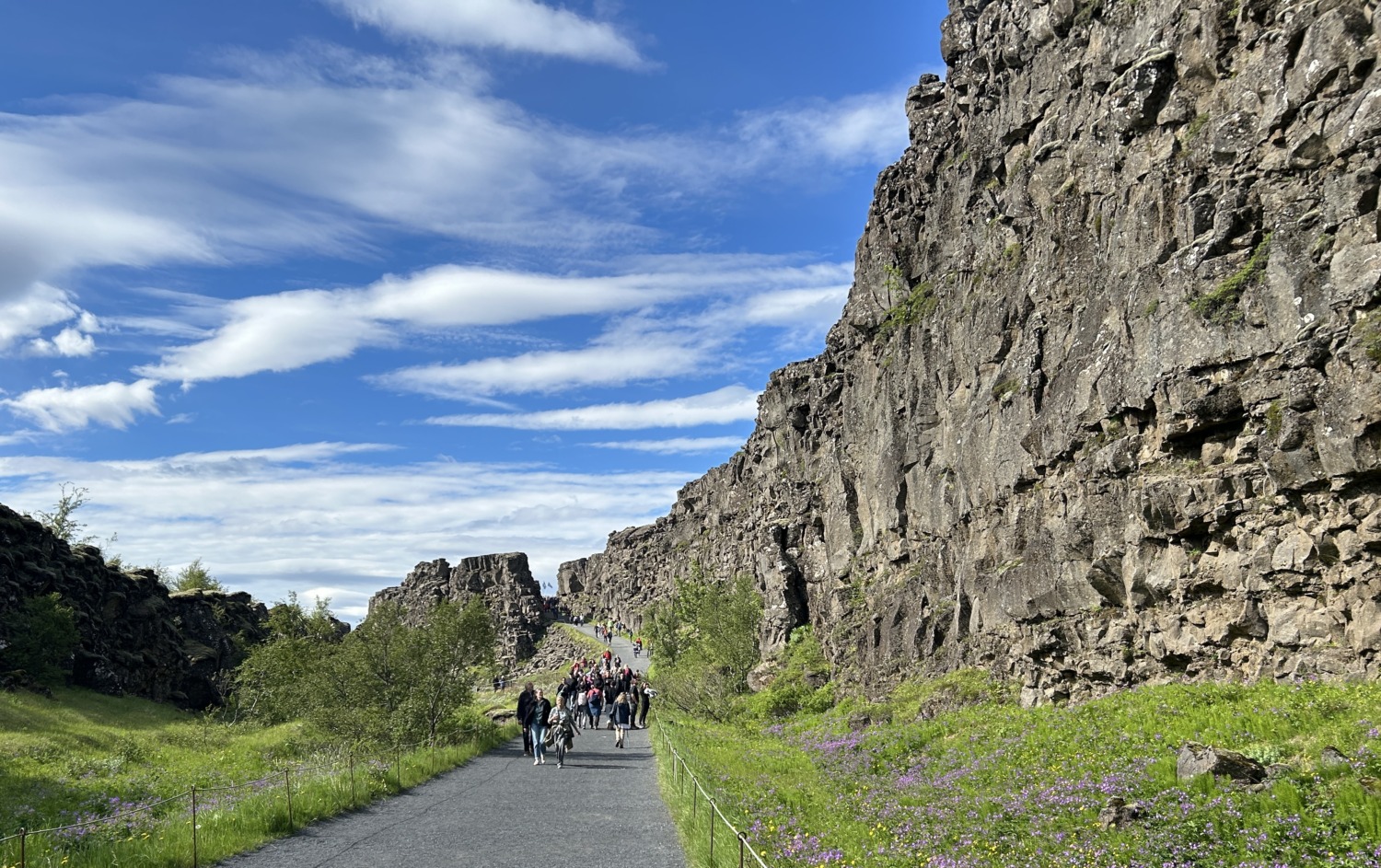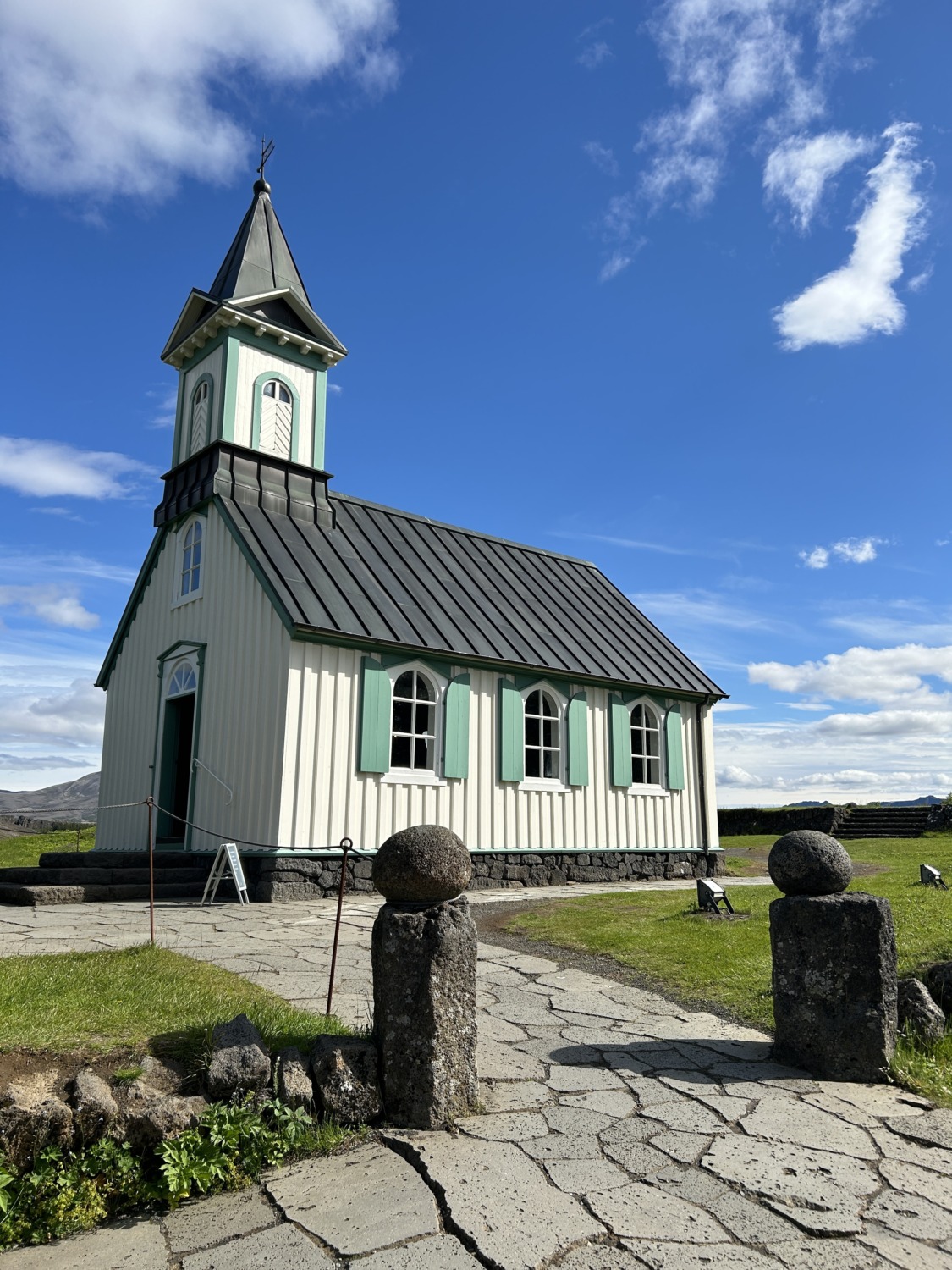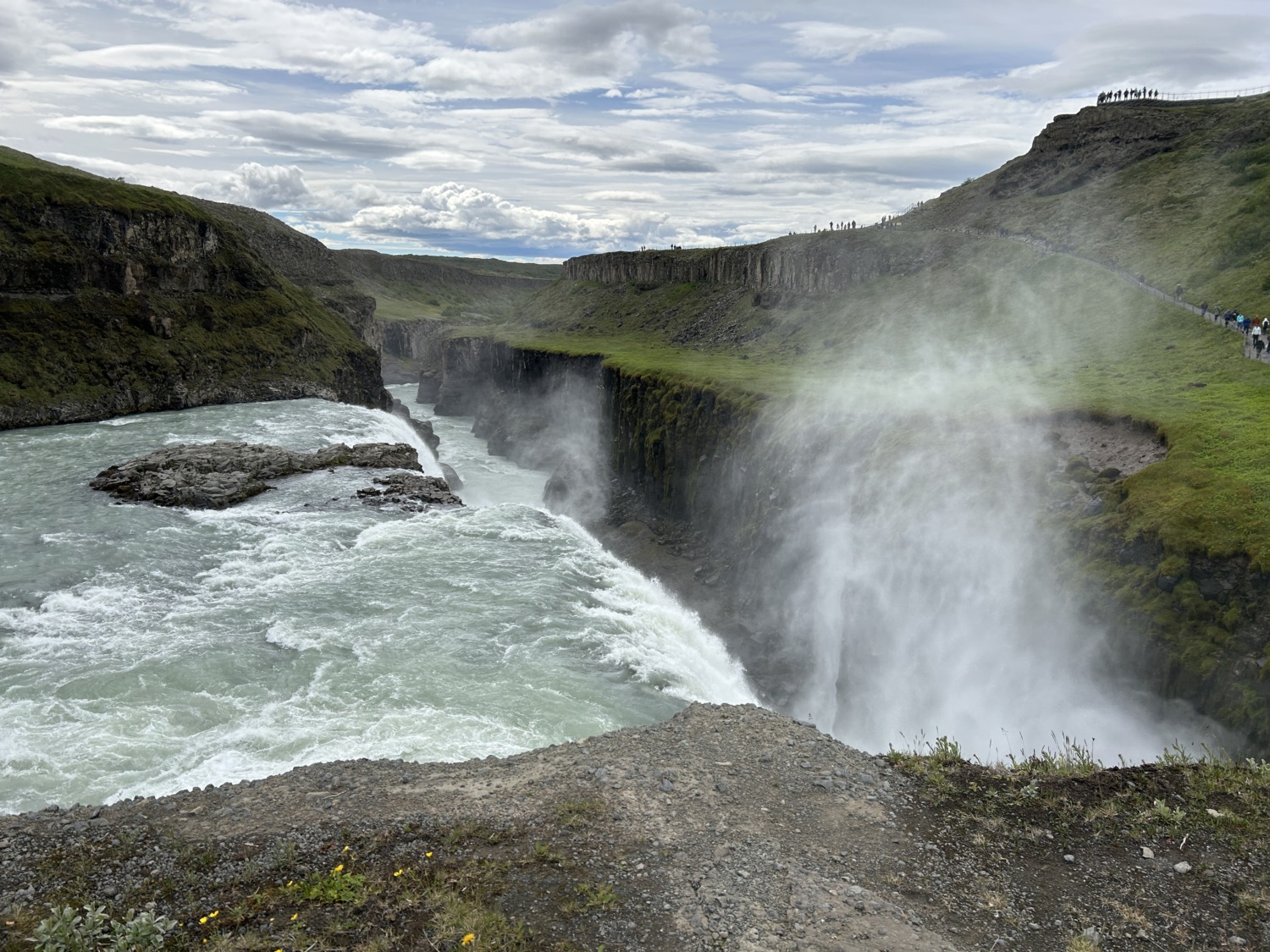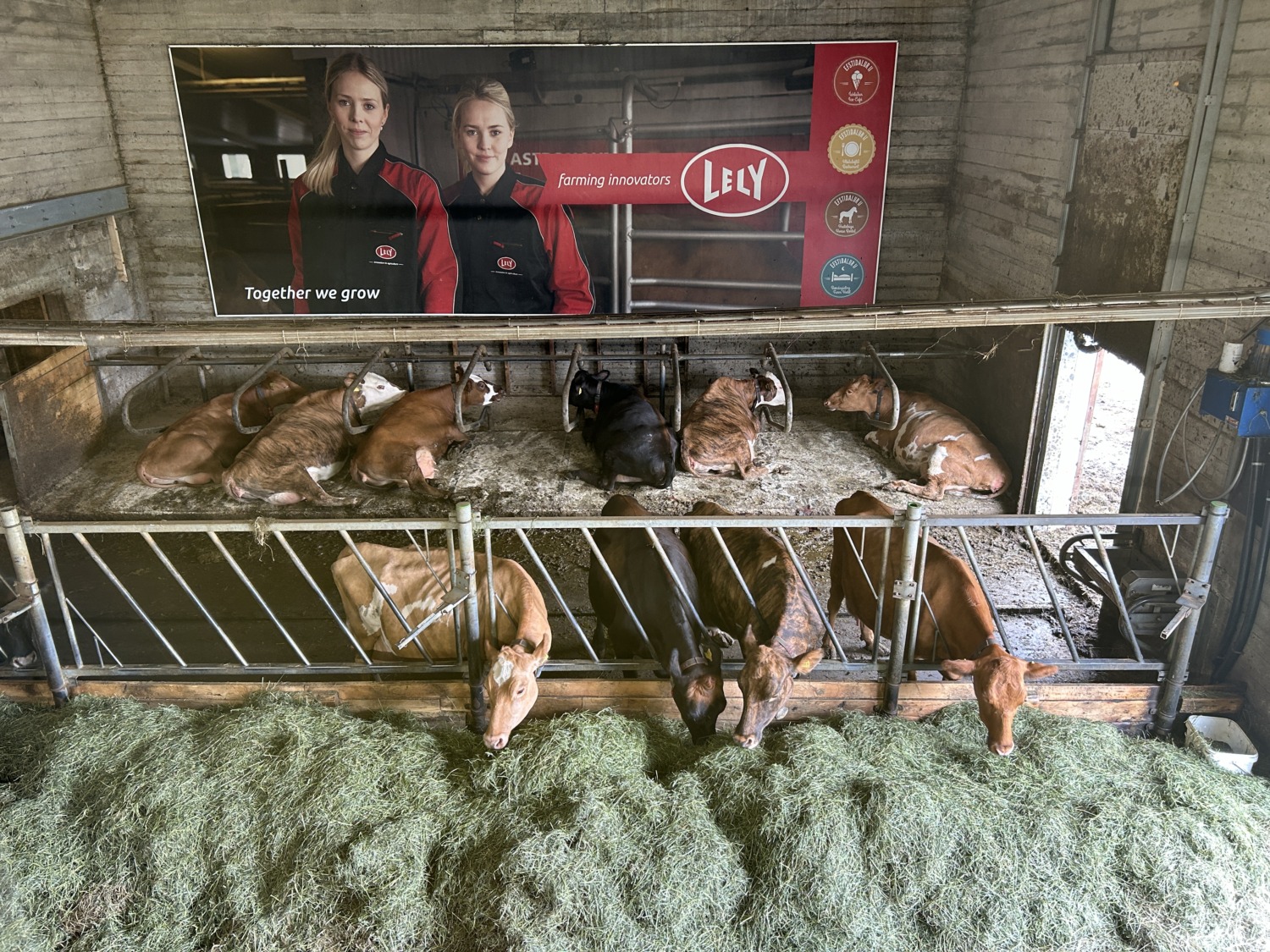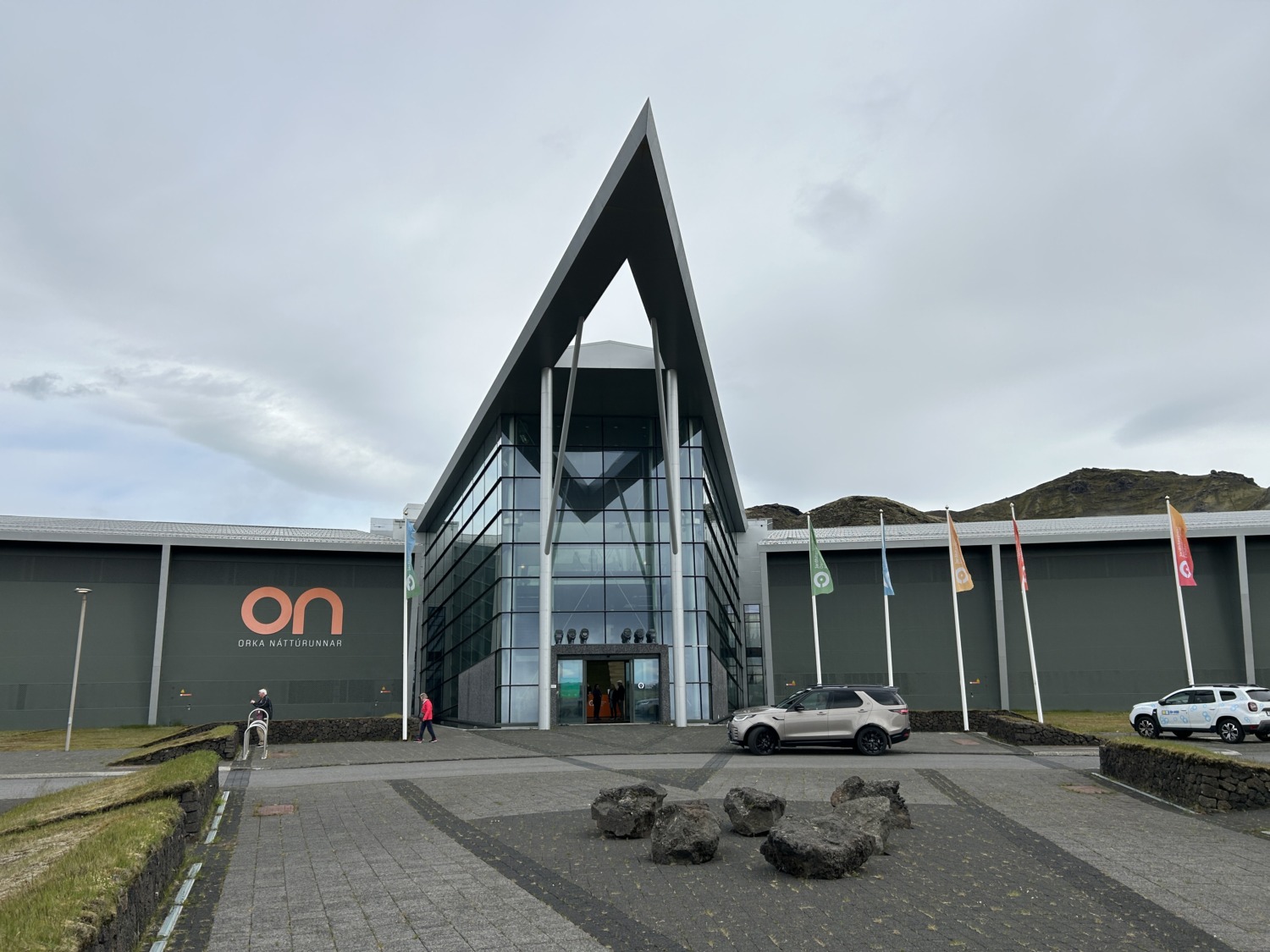What can be better than a waterfall? Turns out, for me, it is a geysir. On our third day in Iceland, Tom and I climbed aboard a bus for another shore excursion. This was was the Golden Circle, the most famous of all the scenic routes in Iceland. Probably because it is closest to Reykjavik, which is where all the tourists go. There were four buses just from our ship doing the Golden Circle, and we were one of four cruise ships in the harbor.
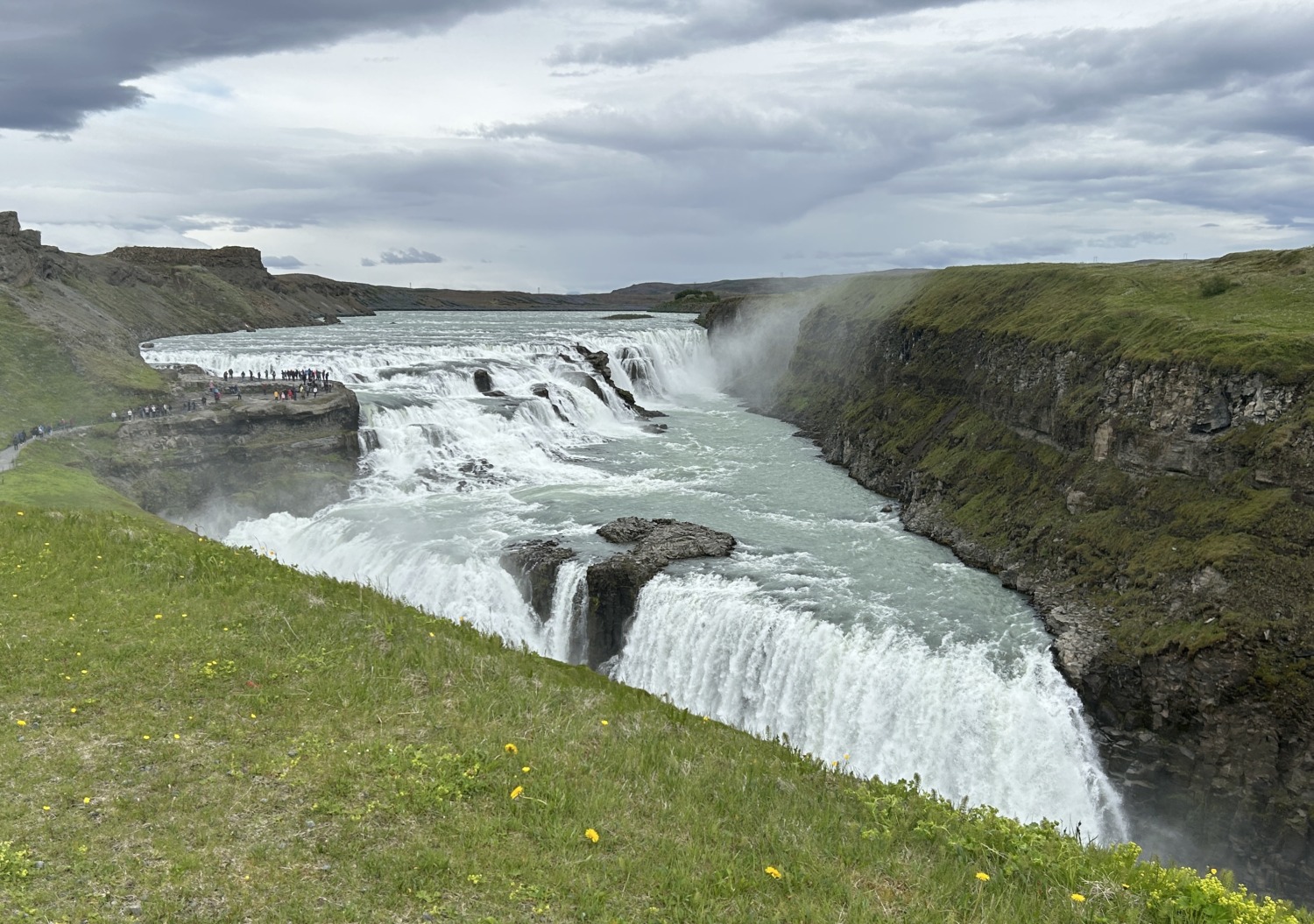
Our guide for the Golden Circle tour was Alycia, which is not at all an Icelandic name. I know because I could actually spell it just from hearing her say it. Alycia is the Italian who was kidnapped by a Viking and stayed in Iceland. She can speak Italian, German, French, Spanish, and English. But, after eight years of living in Iceland, she says she still can’t speak Icelandic. She can understand it when other people speak it (usually) but doesn’t speak it herself.
Speaking of names, when a baby is born in Iceland, it doesn’t get a name until its christening. Lutheranism is still the state religion, so christening is a religious and official event. There are 2,000 male names and 2,200 female names on an official list and parents have to choose one of those names for their children.
Most Icelanders go by their first names all the time. Their last names are created from their father’s first name. So a son of Blár named Thor, for instance, would be Thor Blárson. A daughter of Blár named Magnina would be Magnina Blárdottir. Blár’s last name would be different from his son and daughter, because his last name would be taken from his father. And the mother of Thor and Magnina would have a last name from her father’s name. Everyone in the family has a different last name. Confusing. If you hear a last name that doesn’t end in son or dottir, that person is not from Iceland.
Our Golden Circle tour started with a visit to Þingvellir National Park. From 930, the time of settlement, until 1847 the Icelandic Parliament (Alþingi) met at Þingvellir. When Iceland declared independence from Denmark, it did so at Þingvellir. This is also the place where the North American tectonic plate meets the Eurasian tectonic plate. Þingvellir is a very important place for Iceland.
Tom and I walked along the North American wall, which is gradually moving away from the Eurasian wall on the other side of the valley. In the valley is a series of lakes which are filled by rainwater and drain through cracks in the ground underneath them. We saw the place where the Alþingi met and where they read the Icelandic laws to the gathered people every year.
Another interesting place was the site of the first church in Iceland, next to the Alþingi. When the Viking chieftains decided to convert to Christianity in 1,000, they built a church in this spot. There is still a church here but it was built later. The walk in the National Park was beautiful. There are a lot more hiking trails but we needed to resume traveling around the circle.
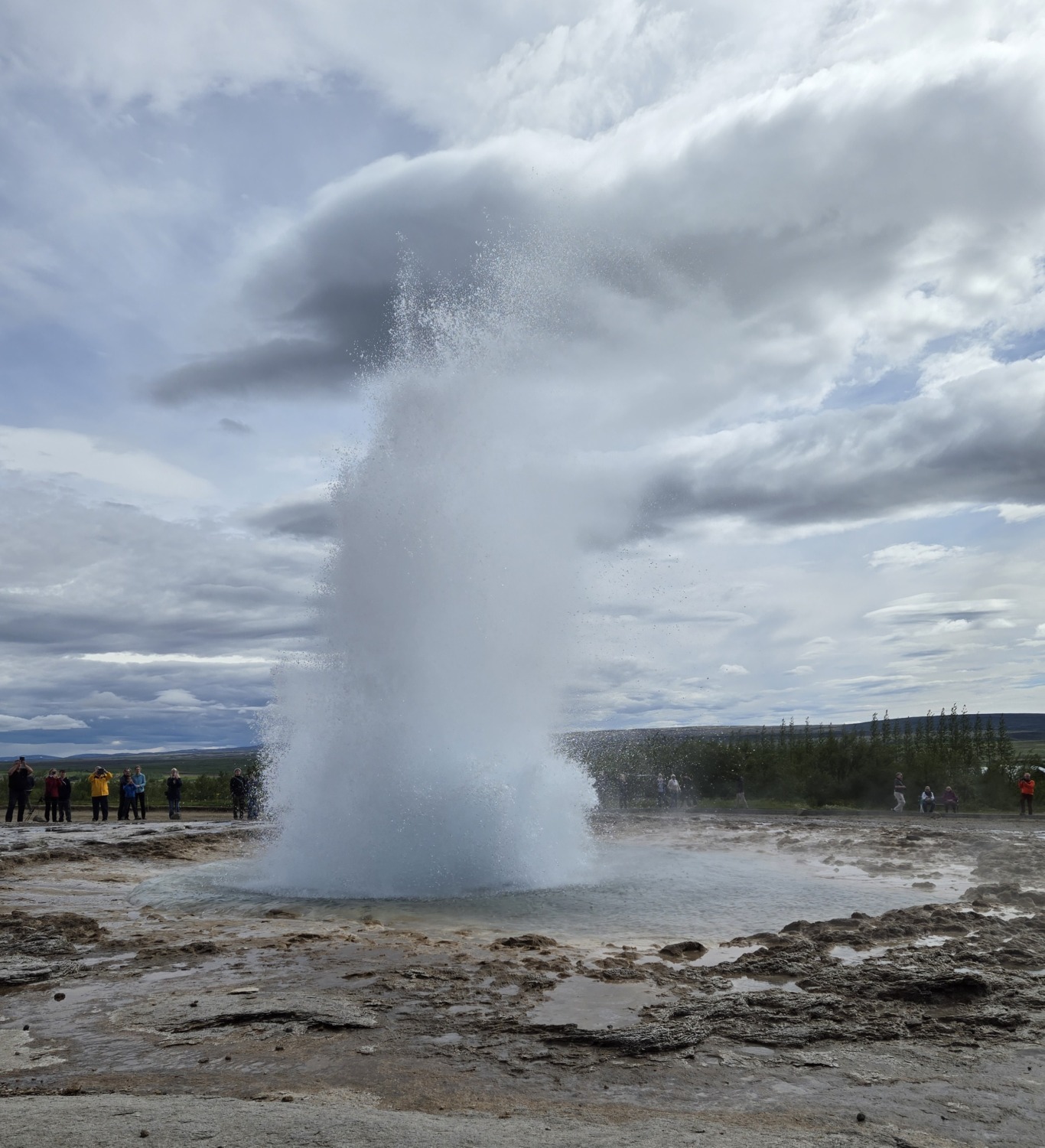
Our next stop was my favorite for the day, Geysir. Geysir is located in a geothermal area in Haukadalur. There are hot springs, steam vents, and sulfurous mud pots in the area, all of which are interesting. Until recently, there was the famous Great Geysir, but after an earthquake it stopped going off. Instead, a smaller geyser, Strokkur, began to erupt.
They say this is the smaller geyser, but it was still really impressive. Strokkur reliably gushes its fountains of boiling hot water every three or four minutes up to 90 feet in the air. The eruption doesn’t last long, but it is very cool when it goes off. Tom and I watched it a couple of times and then did a little walking around the hot pots. The hot pots couldn’t compare to the fascination of the geyser. Plus, they stink.
We returned to the perimeter of the roped-off viewing area and watched the geyser Strokkur erupt another seven or eight times. By watching the hole carefully, we learned to tell when it was about to erupt. The hole “breathed” with a rippling motion that looked like water was moving in and out. I counted “breaths” between eruptions and it did it four to ten times. Then there would be a swelling over the hole and WHOOSH! The water would spew up in the air. It only lasted a few seconds but it was so cool! We stayed until Tom said we had to get back on the bus, then we reluctantly left.
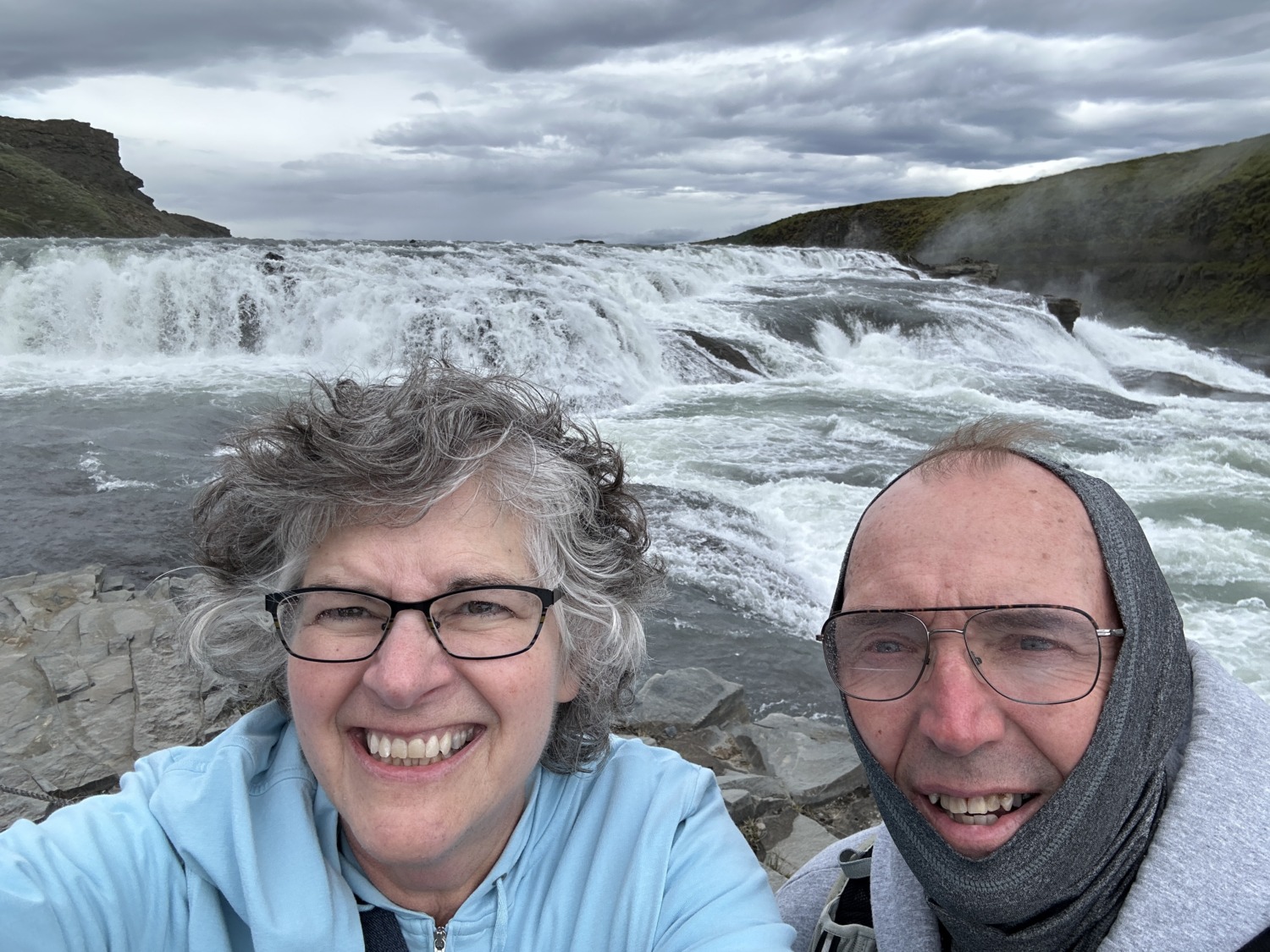
Our next stop was the Gullfoss waterfall. This is one of the biggest tourist attractions in Iceland because it is so close to Reykjavik. More than 2,000 people visit every day in the summer. It is also open in the winter but it was cold enough on the day we visited in July. The rest of the day had been sunny and mild, but the Gullfoss valley is freezing. The waterfall is created by the Long Glacier and the water temperature is very cold. Add to that a stiff breeze and you get a cold tourist.
We saw the Gullfoss from the viewing platform above and then walked down the path to the viewing platform below. On average, 25,000 gallons of glacial water from the river Hvítá plunge 90 feet into the Gullfossgljúfur canyon every second. Walking down, we had to battle the cold spray from the powerful falls as well as the other tourists who all wanted the same ten pictures. But it was well worth the visit.
We had a late lunch at a farm close to the falls. The homemade bread was excellent. The dining area had a glass wall where we could see the cows eating on the other side. Downstairs there was a very popular ice cream parlor with homemade ice cream produced from those same cows. Of course Tom and I had to try some. It was creamy and delicious.
Our final stop of the day was the geothermal plant Hellisheiði. This geothermal plant produces all the hot water (for heating) and all the electricity for Reykjavik. An employee gave us a brief talk on the benefits of geothermal energy and then let us explore the museum and the plant. We saw the turbines, the steam towers, and the insulated pipes that carry the hot water to Reykjavik. Very interesting.
This was our third day of waterfalls and geothermal activity in Iceland. By the end of the day, we felt we understood more about Iceland and its people. Because there are so few people, the country feels wild and open. The volcanic activity means that the people live with earthquakes and eruptions. The weather is harsh. But we loved seeing all of it and getting to know some of the people who live here.

